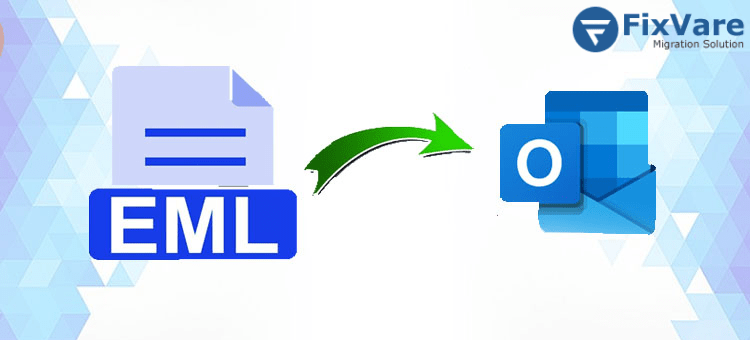Introduction:
The necessity to move EML files to Outlook has proliferated in the modern digital environment. Users frequently have to migrate their email from other email clients that utilize the EML format to Outlook, which uses the PST format, as Microsoft Outlook becomes a more widely used email client. This post will examine the motivations for this change and offer you many techniques for properly moving your EML files to Outlook.
What Motivates Users to Import EML Files into Outlook?
Users must import EML files into Microsoft Outlook for the following convincing reasons:
- Unexpected network problems can prevent email apps that use EML files from operating normally.
- Human Error: Users can unintentionally change the default settings in their email clients, resulting in incompatibility and the requirement to convert EML to Outlook.
- Standardization: As part of the MS Office suite, Microsoft Outlook provides a standardized email platform, which is why many users like it.
- Data Consistency and Integrity: It’s essential to maintain data consistency and integrity, especially when working with emails and attachments.
- Using Outlook 2019, 2016, 2013, 2010, and 2007 to Import EML Files:
- EML files can be transferred to Outlook using a number of different techniques, each having pros and cons. Let’s examine two key strategies:
First Option: Automated EML to PST File Export
Use a specialized program, such as FixVare EML to PST Converter Software, to convert EML files to Outlook PST in a safe and effective manner. This is how you do it:
- Install the EML to PST Converter software after downloading it.
- You can export EML files by choosing them.
- Preview all EML files before the conversion process.
- Select PST as the destination file type.
- Click the “Convert” button after choosing the destination path.
- Open Outlook and View the converted EML files in the PST format.
Choice 2: EML Files into Outlook for export Windows Live Mail use
This approach uses Windows Live Mail as a middleman. Follow these steps:
- On your local machine, launch Windows Live Mail and Microsoft Outlook.
- Go to Windows Live Mail’s File tab, choose “Export,” and then pick “Email messages.”
- Choose “Microsoft Exchange” as the export choice, then adhere to the instructions.
- Choose the directories you wish to export, then finish the procedure.
Alternative 3: EML to PST File Transfer Utilizing the MS Outlook application
You can employ the following technique if Outlook is already installed on your local PC:
- On your computer, start Outlook.
- Go to the location where your EML files are kept by navigating there.
- In the Outlook program, drag and drop the EML files.
Solution 4: Importing EML files from Outlook Express into Microsoft Outlook
- Setting up Outlook Express is necessary before using this technique. Observe these steps:
- On your PC, launch Microsoft Outlook.
- Navigate to the File menu, choose “Open & Export,” and then “Import/Export.”
- Make the “Import Internet Mail & Addresses” selection and adhere to the on-screen directions.
Disadvantages of the Handy Solution
Manual techniques are available for moving EML files to Outlook, but they have several disadvantages that should be noted:
- High Risk of Data Loss: Manual transfers cannot ensure data integrity, and email attachments cannot reliably transmit.
- Loss of the SMTP header can result from manual approaches, which might compromise the integrity of EML files.
- Time and Effort: Manually transferring a lot of EML files can be physically and mentally taxing.
Read this Post: Solution Open EML files without MS Outlook
Conclusion,
We have looked at a number of ways to move EML files to Outlook in this post. Although manual procedures are a choice, they have inherent dangers and restrictions. For a smooth and error-free switch to Outlook, we thus advise adopting automatic solutions like FixVare EML to Outlook PST Converter Software. Maintain the integrity of your important data during the conversion process, and make use of Microsoft Outlook’s robust email management featur



